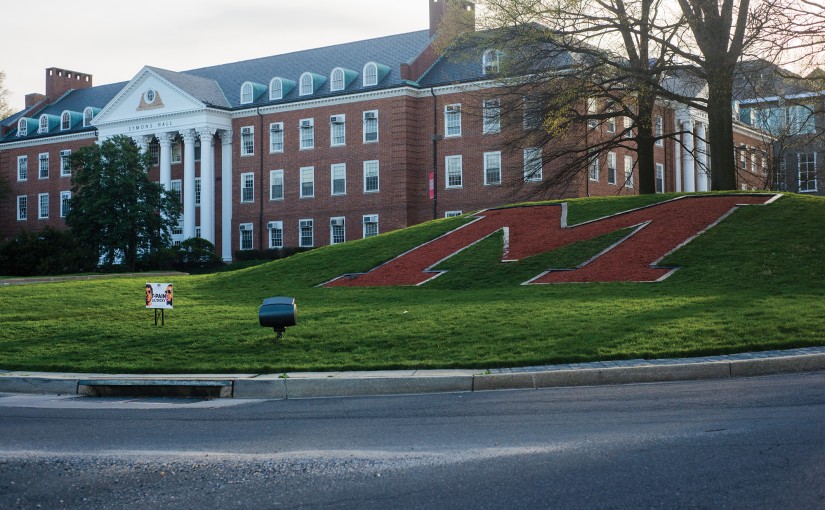After 2nd Lt. Richard Collins, a black visiting student, was killed on the University of Maryland’s campus in May, the school’s admissions department received several letters from black applicants who had been accepted to this university but chose not to enroll, specifically citing safety concerns.
While Undergraduate Admissions Director Shannon Gundy did not provide specifics on the number of letters received or details about their content, The Baltimore Sun reported that the admissions department received seven or eight letters from black applicants who were worried about campus safety.
“Those concerns are definitely legitimate concerns with the past events that have happened,” said Trey Huff, a senior biochemistry major and vice president of this university’s NAACP chapter.
University President Wallace Loh said he was unaware of the letters.
“See, I don’t get to that level of detail,” he said.
[Read more: UMD’s black student enrollment trails black high school graduate rates in Maryland]
Gundy wrote in a statement that this university’s undergraduate admissions department values recruiting students of color and works to provide potential students with “reassurances about the safe and inclusive campus environment and the resources that will be available to support them” should they enroll.
A number of incidents with racist roots have occurred on the campus over the past year.
Collins, a black Bowie State University student, was fatally stabbed on this campus on May 20. Sean Urbanski, a white former student at this university, is awaiting trial on murder and hate crime charges in Collins’ killing.
During the 2016-17 academic year, a noose was found hanging in a fraternity house, and white nationalist posters were reported across the campus on at least five occasions. In the fall 2017 semester, there were 15 verified hate bias incidents on the campus, including several instances of swastikas drawn or spray-painted on university buildings or property.
[Read more: Amid uptick in UMD hate bias incidents, officials open campus diversity survey]
While Huff — a resident assistant on South Campus — said he remains undaunted by bias and discrimination reports on the campus, he said passing the Montgomery Hall bus stop, near where Collins was killed, on his way to work can take an emotional toll.
“There have been times when I’m walking, and I’m looking over my shoulder to see if there’s anybody coming,” he said.
Black student enrollment at this university, the state’s flagship, does not mirror state demographics, adding to applicants’ diversity concerns. While black students made up 36 percent of this state’s high school graduates in 2015, they accounted for only 12 percent of the freshman class at this university that fall, according to a January analysis by The Hechinger Report, a nonprofit organization focused on inequality and innovation in education.
In her statement, Gundy emphasized the admissions office’s outreach efforts — including campus and community-based admission programs and scholarships, high school visits and participation in college fairs — as evidence that the department works to recruit minority populations.
Ronald Zeigler, director of this university’s Nyumburu Cultural Center, said he wasn’t sure how to judge whether sufficient steps had been taken to address the concerns of minorities on the campus.
“I can’t really speak to what’s enough,” Zeigler said. “Someone’s life has been lost — you can’t put a dollar amount on that.”
Loh acknowledged it was “entirely possible” that some prospective students chose not to attend this university because of safety concerns.
“The question is: What do we do to make them feel safer?” he said.
Since Collins’ death, this university has hired a firm to conduct a campus climate survey biennially, created the Center for Diversity and Inclusion in Higher Education and established a “rapid-response team” to respond to racial bias reports. The university also pledged to spend roughly $3.8 million on diversity measures.
Kayla Preston, a freshman information science major who joined the Black Student Union, African Student Association and Caribbean Students Association since coming to this university in the fall, said she felt comfortable and was satisfied with opportunities offered to students of color.
“I feel like those students [who wrote the letters], they just don’t know what you can get involved in once you get here,” she said. “I’ve met a lot of black friends, I’ve joined a lot of black societies. … I feel fine.”
Huff said he thinks the responsibility to serve marginalized communities at this university lies with the administration, and hopes to see more transparency in its responses to bias incidents and a more “concrete plan of action” for serving students of color.
“Somebody was killed on the campus,” he said. “There’s no way to take that back or to hide that.”
CORRECTION: Due to an editing error, a previous version of this story incorrectly stated that the campus climate survey would take place biannually. It will take place biennially. This story has been updated.



